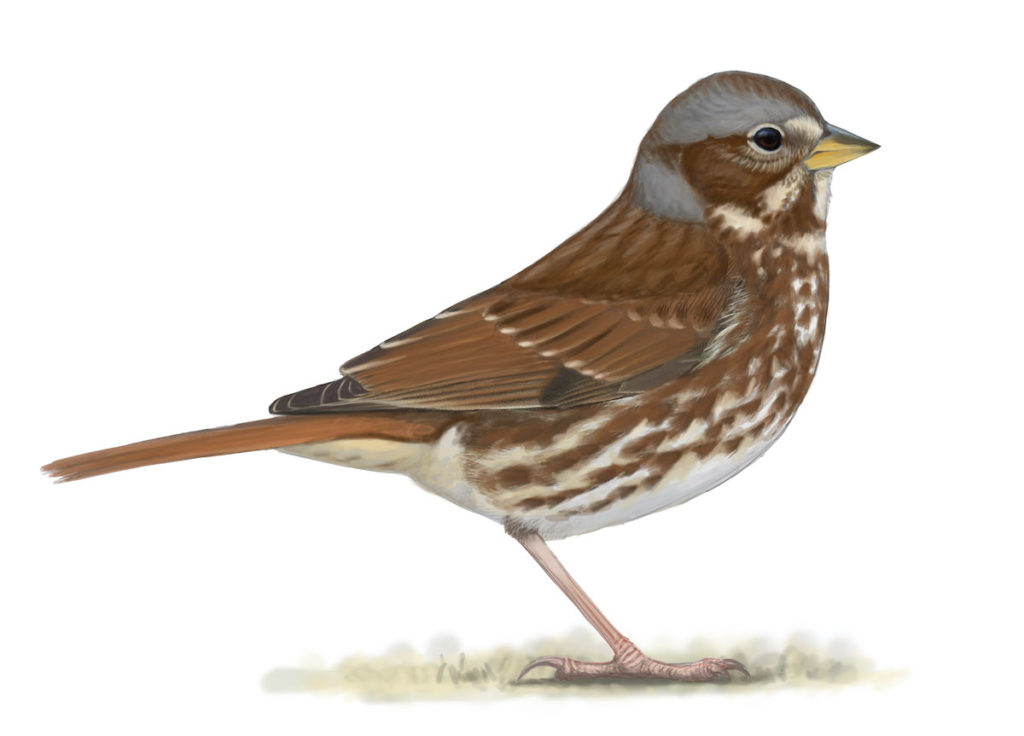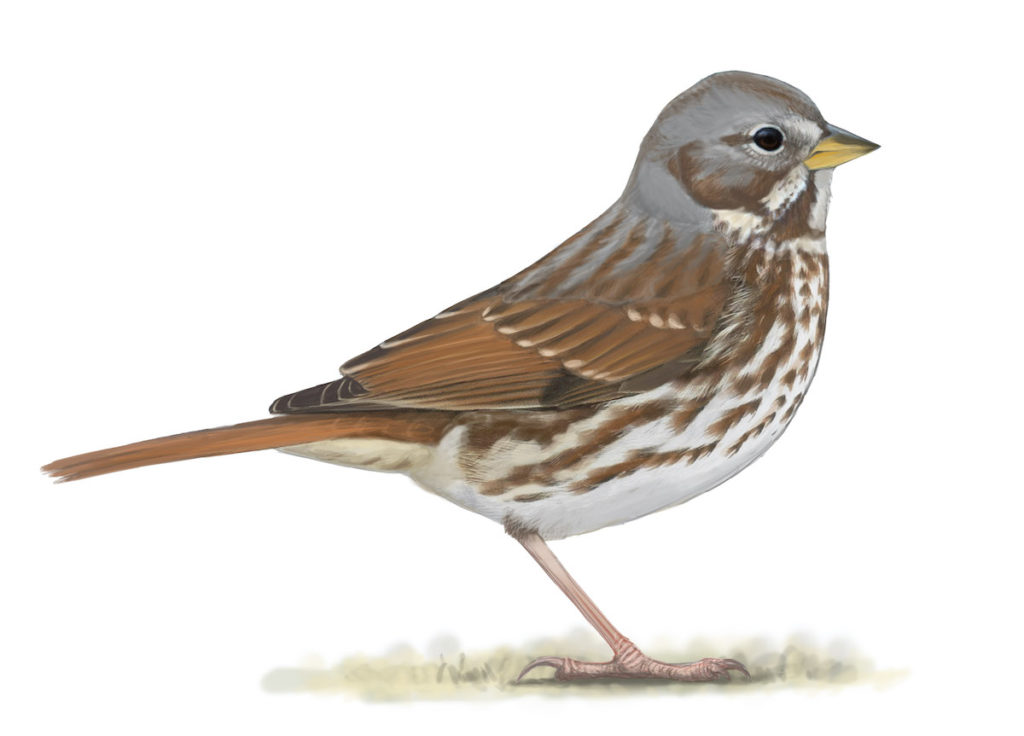Mid-March is when the first northbound Fox Sparrows show up in Massachusetts, and it’s always a pleasure to see this burly, richly-colored sparrow. I’ve been working on some new illustrations showing the variation among the birds in my yard this week.


Regional variation in Fox Sparrow is extensive, and gets a lot of attention, with four distinct subspecies groups that could all be elevated to species someday. In eastern North America we only expect to see one of those subspecies groups – the “Red” group – which are the most colorful and (arguably) most attractive of the Fox Sparrows. But even though we only see one subspecies group there is still a lot of variation worth noticing.
The two examples shown here were both in my yard in central Massachusetts this past week (March 2021), and are typical of the range of variation that I see in the northeastern states. Most Fox Sparrows here are closer to the more richly colored and heavily marked variant shown at the top, but many are grayer, and a few are as gray and lightly marked as the one illustrated here.
Red group Fox Sparrows nest in the boreal forest across all of Canada and west through Alaska. There is a tendency for birds nesting farther west to have more gray and less rufous in the plumage, and smaller spots below. The western populations are sometimes classified as a separate subspecies (zaboria, with the eastern breeders being iliaca) but the color differences are slight and variable and blend gradually from east to west. It’s tempting to speculate that very gray birds in the east originate in western breeding areas. Lots of species that nest in Alaska and northwest Canada migrate southeast in the fall, and virtually all of the Red group Fox Sparrows (including Alaska breeders) spend the winter in the southern US east of Texas. So it would not be surprising to find some western Fox Sparrows in the northeast.
The challenge is confirming that a gray bird is from the west, and not just an extreme variant from an eastern breeding population. Before we can label the gray birds as “western”, we need to know how far east they can be found in summer. Can they be found among the nesting population in Ontario? Quebec? Newfoundland? Conversely, I wonder if very richly-colored red birds can ever be found among the breeding population in Alaska? Northwestern Canada?
I see a similar range of variation from rust to gray among the local Song Sparrows here in central Massachusetts, so I suspect that we will never be able to say very much about these Fox Sparrows’ origins based on color, but it will be fun to investigate.


Thanks for your very nice piece on the color variation in “Red” Fox Sparrows. I recognized both of those types at our place in the mountains of northwestern Virginia years ago when we first bought the place and began feeding birds. I think this is the first time I have seen the distinction described and illustrated in such a quality way (as is always the case with you). Some years we seem to have both, but other years only one or the other with the red form somewhat more frequent. This winter we had one that was so gray that I really began to consider the Slate-Colored form. I tried to get a photo but lighting and lack of clear field kept frustrating my attempts, and then the bird departed the area. Maybe next winter.
We just ordered one of your guides for our daughter in California who is becoming a pretty good birder, so it was time for her to have the premier field guide. I don’t believe it has arrived yet, but I’m sure she will be happy to get it.
Keep up the great work and best wishes. Stay safe. David Davis, Shenandoah County, Virginia